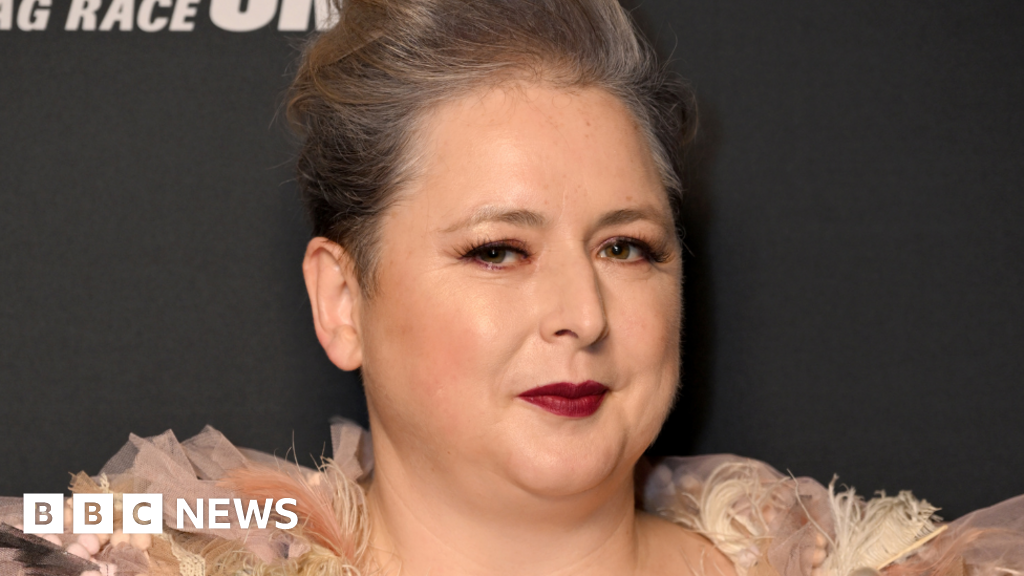Fitness
Cerebral palsy: What is it, who gets it and what does the future hold?
:quality(70):focal(2403x1438:2413x1448)/cloudfront-eu-central-1.images.arcpublishing.com/irishtimes/ZKYNLXD4P5EBNAZUW2ANKKMSFI.jpg)
What is it and who gets it?
Cerebral palsy (CP) is a group of lifelong conditions that affect the person’s ability to move and maintain balance and posture. Cerebral refers to the abnormal development of the brain before or during birth or damage to the developing brain within the first months of a child’s life. Palsy refers to weakness or problems with using muscles.
“About 50 per cent of cases of CP occur in high-risk infants”, explains Prof Deirdre Murray, consultant paediatrician at Cork University Hospital and chair of Early Brain Injury and Cerebral Palsy at University College Cork (UCC). “These include babies who are born preterm and who are vulnerable to brain bleeds that affect the motor pathways of the brain.
“Some of these babies will have hypoxic ischaemic encephalopathy which is a lack of oxygen before birth, during labour and delivery or just after birth. In the other 50 per cent of cases of CP, the babies are born healthy and the issues arise later. For example, meningitis or encephalitis in the first few months of life can lead to CP.”
Cerebral palsy is the most common childhood-acquired lifelong physical disability. About 150 babies are diagnosed each year with cerebral palsy in Ireland. And about 3,000 children and young people and 9,500 adults live with the condition in this country.
What are the symptoms and how is it diagnosed?
The symptoms of cerebral palsy vary from person to person. Everyone with cerebral palsy has problems with movement and co-ordination. Many also have related conditions including seizures, problems with vision, hearing or speech, intellectual disability, changes in the spine such as scoliosis or joint problems such as contractures (shortening and hardening of the muscles, tendons or other tissues which leads to deformity and rigidity of the joints).
Doctors classify cerebral palsy according to the main type of movement disorder, depending on which areas of the brain are affected. The most common type of cerebral palsy results in spasticity or stiffness in the muscles either in the legs, down one side of the body or in the arms, legs, trunk and face.
:quality(70)/cloudfront-eu-central-1.images.arcpublishing.com/irishtimes/GVOFDIXLFNEN3K3DHV4ZUPD75I.jpg)
Other forms result in uncontrollable, slow and writhing or rapid and jerky movements of the hands, arms, feet and legs making it difficult to sit and walk and suck, swallow or speak (this form is known as dyskinetic cerebral palsy). People with ataxic cerebral palsy have poor balance and co-ordination which impacts fine motor skills such as writing and gross motor skills including walking. Some people have a combination of different forms of cerebral palsy.
A new early detection programme was introduced to the four main maternity hospitals in Dublin and Cork in 2023 to bring in earlier diagnosis of cerebral palsy. “All high-risk and pre-term babies [of less than 32 weeks] are now observed by a physiotherapist or an occupational therapist before they go home from the maternity hospital. This general movement assessment will be done again at three months. The baby will be given brain scans if abnormalities are seen. Motor and neurological examinations are repeated at around six months so that a diagnosis can be made by nine months,” explains Prof Murray.
Prof Brian Walsh, neonatologist at Cork University Hospital, who leads this early detection programme, says that the aim of the programme is to reduce the age of diagnosis to under 12 months. “We want to make an accurate diagnosis as young as possible so that we can target referrals to physical disability services earlier. Previously, diagnosis was made between aged two and four,” he explains. The early detection programme is due to be extended to University Hospital Waterford and hospitals in Children’s Health Ireland (CHI) soon.
What treatments are recommended for cerebral palsy?
There is no cure for cerebral palsy, but treatment can drastically improve the lives of those who have it. Once a diagnosis is made, therapeutic assessments and interventions should begin as soon as possible.
Prof Denise McDonald is a paediatrician with a special interest in neuro-disability at Tallaght University Hospital and CHI. “The bedrock of treatment for CP is goal-focused timely physiotherapy and occupational therapy interventions. Children with CP are also at high risk of hip dislocation so orthopaedic surveillance and preventive surgery to improve posture is important to avoid salvage surgery to the hips,” she explains. Children with CP who are wheelchair users are also at risk of developing scoliosis and will require surgery to treat this.
[ COPD: What is it, who gets it and what does the future hold? ]
Prof McDonald says that intensive blocks of therapy are particularly beneficial at certain times (for example following operations). “In an ideal world, we would tailor interventions to particular children and increase the intensity of therapies when they need it but we don’t have the resources or flexibility to do this,” she adds. Some children with CP will also require more complex muscle tone management and medications.
Have there been any breakthroughs in treatment of the disease in recent years?
:quality(70)/cloudfront-eu-central-1.images.arcpublishing.com/irishtimes/JSFDI5N2XFDHPNX76D6OHEPL7M.jpg)
The biggest breakthrough in Ireland was the establishment of the Cerebral Palsy Foundation in 2023 with research and training hubs at UCC, Royal College of Surgery of Ireland (RCSI) and Trinity College Dublin (TCD). The early detection of cases in the first two years of life (led by UCC), musculoskeletal and orthopaedic care for young people (led by TCD), community-based motor management services (led by UCC, TCD and RCSI) and adult services (led by RCSI) are the four priority areas for the initial phase of the programme. This global not-for-profit foundation which received large funding from tech billionaires John and Patrick Collison (whose brother Tommy has CP) aims to introduce best-practice cerebral palsy clinical care in Ireland.
Studies in Sweden have found that good orthopaedic surveillance of babies and young children with annual X-rays can dramatically reduce the number of children with CP who need so-called salvage hip surgery. An orthopaedic surveillance programme for hips, scoliosis and upper limbs that was developed in Scotland (Cerebral Palsy Integrated Pathway Scotland) is currently being rolled out in Ireland.
[ Heart disease: What is it – and what does the future hold with improving treatments? ]
So-called cooling therapies for babies with hypoxic ischaemic encephalopathy which were introduced to maternity hospitals in Dublin and Cork in 2009 have reduced the rates of cerebral palsy and severity of symptoms of cerebral palsy by 30 per cent. “For these cooling therapies, the babies must be transferred within six hours of birth to specialist maternity hospital in Dublin or Cork. Sometimes, the treatment begins in the ambulance to the hospital,” explains Prof Murray.
What are the health services like for people with cerebral palsy?
:quality(70)/cloudfront-eu-central-1.images.arcpublishing.com/irishtimes/DNT3H5FFMJFEHPFCCMN4FJU2NQ.jpg)
The introduction of the early detection and intervention programme in mid-2023 as part of the Cerebral Palsy Foundation funding has meant that almost 300 newborns have received assessments at the optimum time.
However, changes to the model of disability services from specialised early intervention teams to childhood disability networks teams in Ireland in recent years has resulted in lack of expertise in cerebral palsy in some parts of the country. Cerebral palsy specialists say that a lot of parents are frustrated with the new childhood disability network teams due to fewer physiotherapists, occupational therapists and other health professionals with experience of dealing with children with cerebral palsy. Prof McDonald says while specialist therapy services to work alongside the childhood disability network teams currently exist in some parts of Ireland, they aren’t available in other parts.
Dr Jennifer Ryan, senior lecturer in the School of Physiotherapy and Director of the CP – Life Research Centre at the Royal College of Surgeons of Ireland says that there are currently no adult services for people with cerebral palsy. “Teenagers with CP are discharged at 18 and the majority of them are referred to their GP, many of whom don’t have expertise in CP.”
Dr Ryan is working with young adults to help them understand their condition better and build a team of healthcare professionals to help them manage their physical and mental health better. “Ten years ago, nobody was talking about adults with CP. There was no advocacy group either. Now there is more research and more voices of adults with CP which will lead to more clinical services,” says Dr Ryan, whose CP – Life Research Centre is also funded by the Cerebral Palsy Foundation. The foundation has also set up a new cerebral palsy advocacy group.
What does the future hold for people with cerebral palsy?
:quality(70)/cloudfront-eu-central-1.images.arcpublishing.com/irishtimes/2BCK6UKOFROM7AW4EZXULY5QPQ.jpg)
The Cerebral Palsy Foundation’s five-year programme of research is set to be the biggest game-changer for early diagnosis and early intervention of cerebral palsy in babies and young children as well as advocacy for and understanding of the needs of adults with cerebral palsy.
Lily Collison, the mother of Tommy, John and Patrick Collison is a board member of the foundation. “I was the mother of a child with a diagnosis of CP. I can tell you it is tough hearing that news, but I believe it is far tougher when you have to fight for the best care for your child. It should be available to all children in Ireland as a basic human right.”









